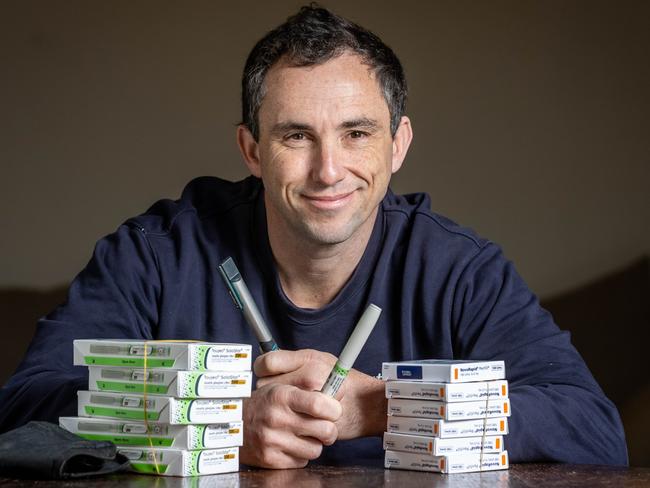How Melbourne scientists have reprogrammed cells in what could deliver diabetes breakthrough
A young teen’s organ donation has paved the way for a world first diabetes breakthrough that is the closest thing yet to a cure.
Victoria
Don't miss out on the headlines from Victoria. Followed categories will be added to My News.
Melbourne scientists have reprogrammed cells from a faulty human pancreas to begin producing insulin in what is hoped to be a major step towards a potential diabetes cure.
By using an experimental cancer drug to stimulate stem cells from a donor’s pancreas, the Monash University team have created insulin-producing cells they believe could one day replace those destroyed in the 500 million people worldwide who suffer type 1 or severe type 2 diabetes.
The breakthrough follows the tragic death of a young teenager who had type 1 diabetes, but whose family donated their pancreas to pave the way for the world-first discovery detailed overnight.
After revealing they had regenerated the teen’s insulin-producing cells in their Melbourne lab, the Monash team must now examine whether the process can overcome diabetes during animal trial before it can consider whether it is safe to progress to human trials in the coming five years.
But, if the breakthrough can result in a successful treatment, lead researcher Dr Keith Al-Hasanii said it offers hope type 1 and about 30 per cent of type 2 diabetics could ditch regular insulin injections for their survival.

“We discovered there is a pharmacological agent that’s currently approved by the US Food and Drug Administration that’s used to treat forms of cancer,” Dr Al-Hasanii said.
“We managed to repurpose it and showed that it can actually influence the re-expression of insulin in a type one diabetic donor, who had zero insulin cells.
“We managed to reactivate insulin expression within two days in the lab.
“It’s cost effective and inexpensive.”
In 2021 the Monash team discovered that some stem cells are retained in the pancreas that become dormant after birth, but which they were able to reactivate and turn into insulin-producing cells in mice.This year the scientists progressed their work further, with results published in the Nature journal Signal Transduction and Targeted Therapy revealing they were able to take stem cells from the pancreas of a dead insulin-dependent teen and use a drug called GSK126 to prompt them to transform into newborn insulin-producing cells.
GSK126 acts to alter the epigenetic makeup of a cell and, while it is not licensed for use in diabetes, the US medicines watchdog has approved its use for some cancers.
“We previously cured diabetes in mice which was very exciting, but this study is very different because we are working with pancreatic tissue that’s been donated to us from organ donors, so it’s a very reflective model,” Dr Al-Hasanii said.
“We can reactivate these cells to express insulin and we did that using human pancreatic tissue that was given to us from the St Vincent’s Institute of Medical Research who are our partners and collaborators in this study.”

In rare cases islet transplants are taking place to help some adults overcome type 1 diabetes, however the process relies on sourcing insulin-producing beta cells from up to three matching donors, making it currently impractical on a wider scale.
This is because the vital beta cells account for just 1 per cent of the tissue in a pancreas, while exocrine cells that secret enzymes into the small intestine make up about 80 per cent of pancreas cells.
Because the Monash stem cell procedure uses GSK126 to reprogram the abundant exocrine cells it is hoped to provide a more practical source of insulin-producing cells, which could be injected into patients every 6-12 months.
Diagnosed with type 1 diabetes when he was two, Simon McCrudden has relied on constant insulin injections for 44 years to balance his blood sugar levels - and he’s desperate for a better way to survive.
“I don’t really know any other way of doing life than injecting myself several times every day,” Mr McCrudden said.
“The idea of just being able to go about life without having to check my blood sugar, have injections or calculate what I’m eating when I’m out at night...if I suddenly could live life without having to worry about that it’d be wonderful.
“When you get to my age, there’s always lots of stories that have come out about research progress. But this one feels like something that has a lot more potential to affect a really dramatic change.”


